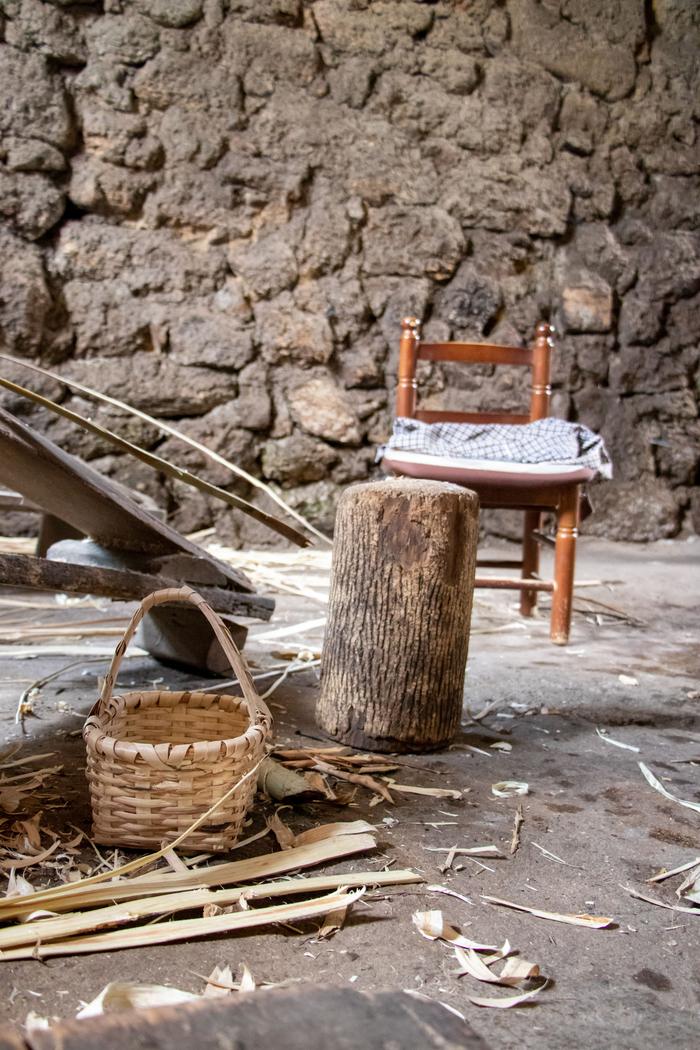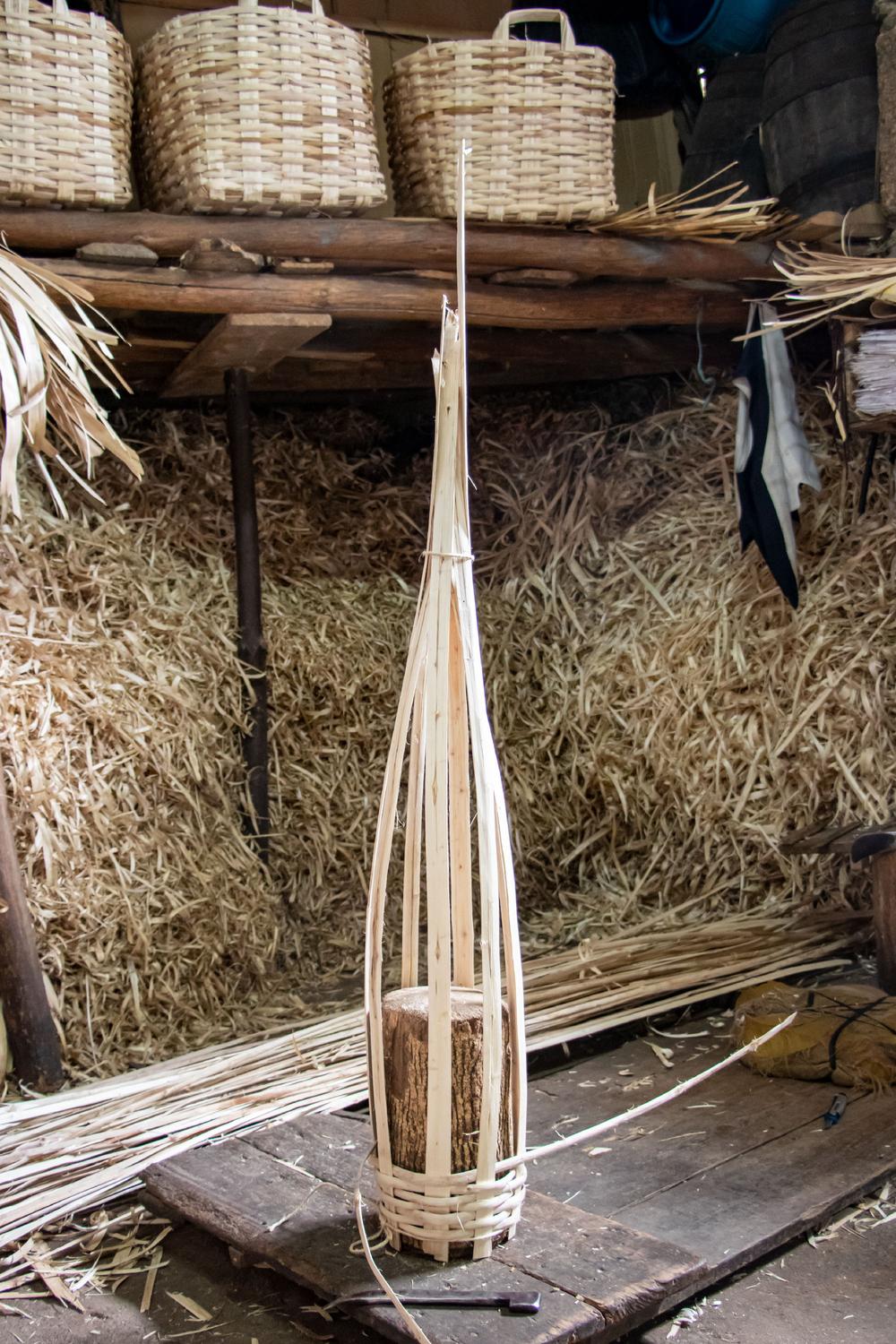The Baskets | As Cestas
The Baskets | As Cestas is an investigation into one of Portugal’s most multi-purposed tree species, the chestnut.
The Baskets is the result of an exploratory, non-verbal and collaborative design process with chestnut basket weavers Joaquim and Irene Venâncio, two of the last artisans of their kind from Famalicão da Serra in northern Portugal. A four-week experiment resulted in open objects that translate the character of their construction, the core of this craft itself. The objects appear simple, yet they illustrate the knowledge and practices of lifelong experience that still require skilled human hands.
Project development within the scope of the 4-weeks residency Supernatural Togetherness of Art(e)facts21 – Knowledge Biennial 2021 in Portugal.
Project development within the scope of the 4-weeks residency Supernatural Togetherness of Art(e)facts21 – Knowledge Biennial 2021 in Portugal.



For centuries, the native chestnut species Castanea sativa has been a versatile tree in Portuguese culture – the breadfruit tree has ecological, economic and cultural significance and is one of the most deeply rooted elements of material culture in north-central Portugal, especially in the Guarda area. Today, large chestnut stands are protected by law, and for several years now, chestnut stands have been protected on several levels. In the Guarda region of northern Portugal, chestnut tree stands are found in biologically diverse landscapes that provide basket makers with the ecological basis for their craft. In the fragile spaces of the forest, the craft reflects a centuries-old practice that is strongly influenced by the synergies between human and non-human actors and exists in a delicate balance between harvest and regeneration. Their care – periodic cutting, drying and storage – requires ecological knowledge of growth cycles and climatic conditions. The forest is thus not merely a source of raw materials for them, but a habitat for cultural interaction: it determines the rhythm, form and materiality of craft practice. The craft of Joaquim and Irene Venâncio is thus inscribed in the ecological metabolism of the place – it thrives on it and at the same time contributes to its care.


In the neighbouring communities of Guarda, the tradition of basket weaving dates back more than 400 years and seems to continue invisibly. Basket weaving is considered one of the most modest crafts, used for thousands of years to produce functional and cyclical objects that can be found in all areas of daily life. In contrast to the fine, handcrafted wicker baskets, the coarse and robust chestnut baskets have always been used to transport goods and food, in agriculture, for harvesting and gathering grapes and olives, in fishing and for some items of personal use. If they are damaged, they are returned to the basket maker, who repairs them by re-watering the material.



Viewed through the lens of bioregional design, the craft can be understood as an expression of the local nature of knowledge and materials. The materials, techniques and forms arise from what the landscape provides. Production takes place in very small, circular economies – the material grows, is used, rots or returns to the soil. This creates a symbiotic relationship between people, materials and the landscape, in which cultural identity and sustainable action are inextricably linked. The manufacturing process is characterised by a dialogue between hand and material – in the process of making, in the embodied experience through and not just with the material. The relationship can be experienced directly: the material guides the hand, offers resistance, demands adaptation. The elasticity, moisture and grain of the chestnut significantly determine the form and technique. In a natural cycle of matter, nothing but water and heat are added to the processed parts. All of them can return to the forest as nutrients.




